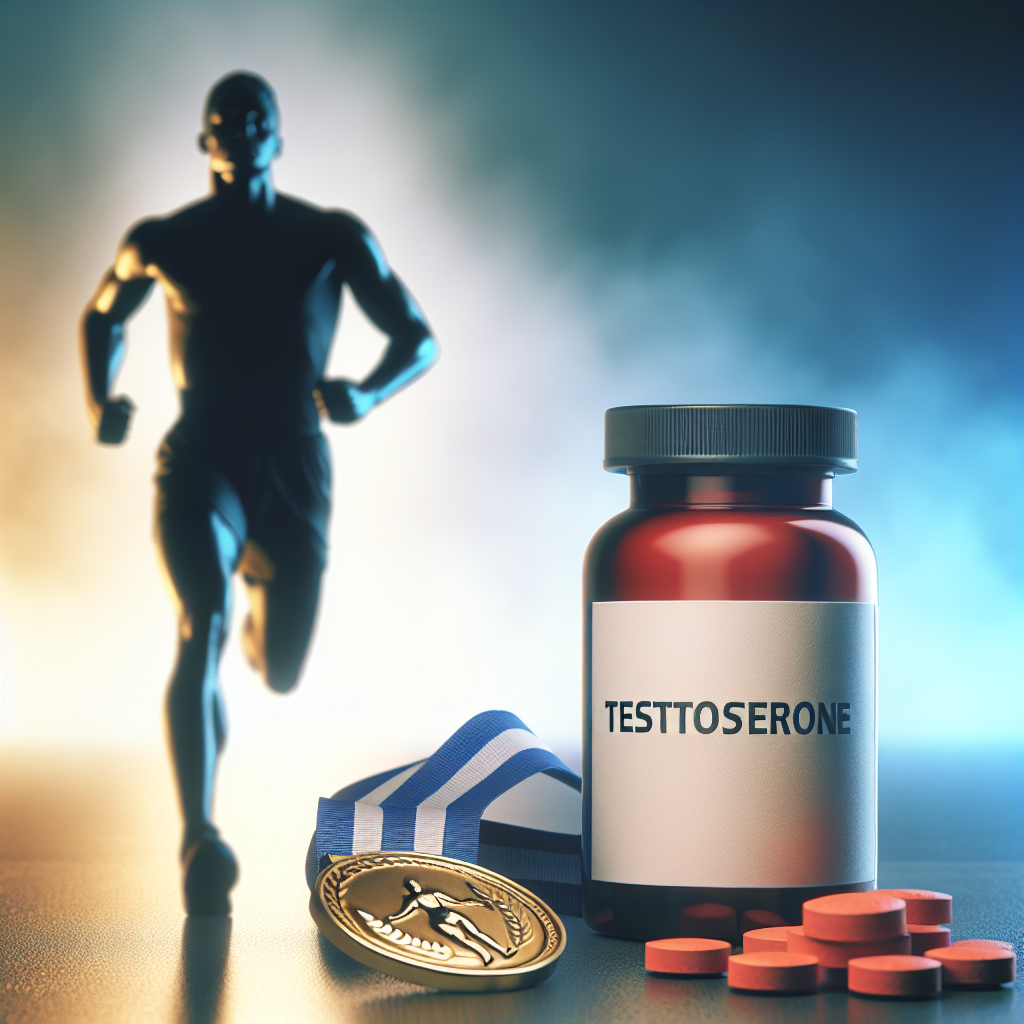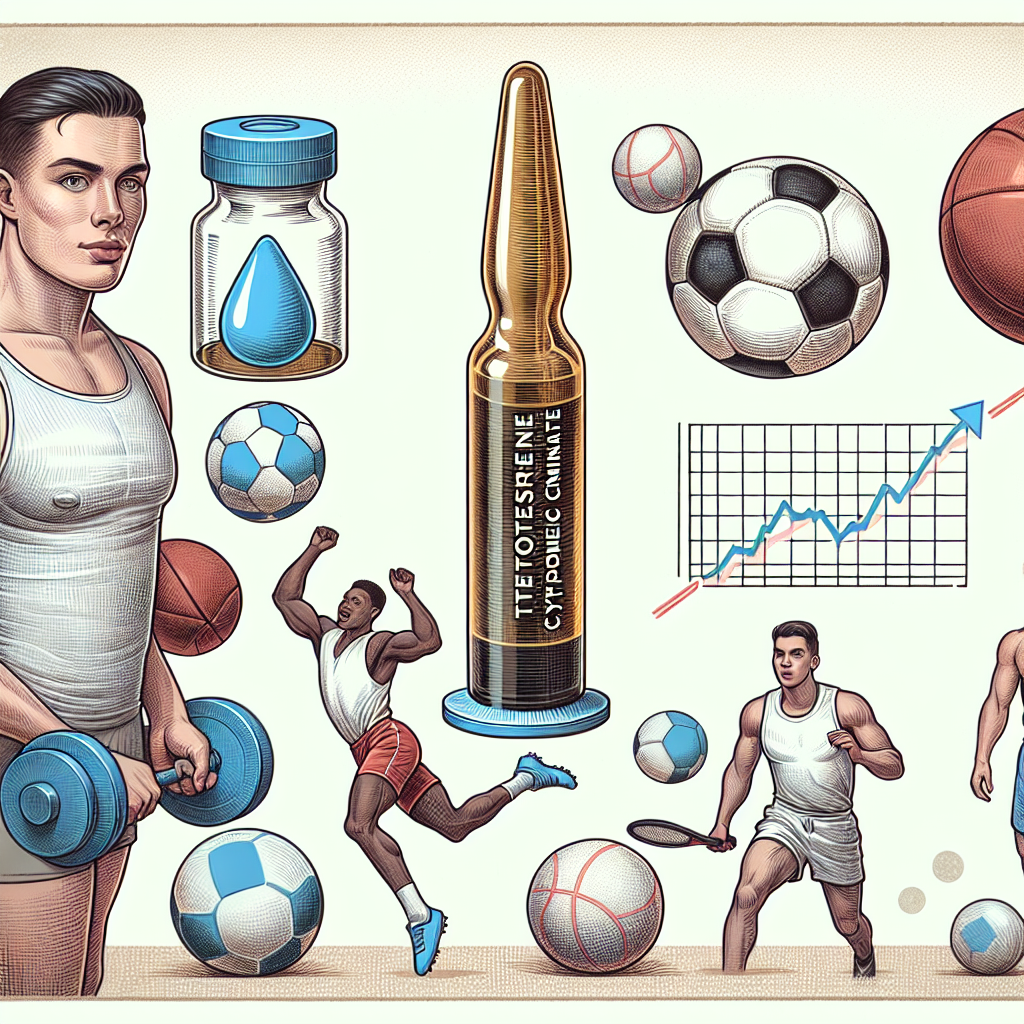-
Table of Contents
- The Regulation of Injectable Stanozolol Use in Sports Competitions
- The Pharmacokinetics and Pharmacodynamics of Injectable Stanozolol
- The Regulation of Injectable Stanozolol Use in Sports Competitions
- The Current State of Injectable Stanozolol Use in Sports Competitions
- Expert Comments
- Conclusion
- References
The Regulation of Injectable Stanozolol Use in Sports Competitions
Stanozolol, also known as Winstrol, is a synthetic anabolic steroid that has been used in sports for its performance-enhancing effects. It was first developed in the 1960s and has since been banned by various sports organizations due to its potential for abuse and adverse health effects. However, despite its ban, stanozolol continues to be used by athletes, particularly in injectable form. This article will discuss the regulation of injectable stanozolol use in sports competitions, including its pharmacokinetics and pharmacodynamics, and the current measures in place to detect and deter its use.
The Pharmacokinetics and Pharmacodynamics of Injectable Stanozolol
Stanozolol is a synthetic derivative of testosterone, with both anabolic and androgenic properties. It is available in both oral and injectable forms, with the injectable form being the preferred choice for athletes due to its longer half-life and lower risk of liver toxicity. When injected, stanozolol is rapidly absorbed into the bloodstream and reaches peak levels within 2-3 hours. It is then metabolized by the liver and excreted in the urine within 24 hours (Kicman, 2008).
The anabolic effects of stanozolol include increased muscle mass, strength, and endurance, while its androgenic effects can lead to virilization in women and masculinization in men. These effects are mediated by stanozolol’s ability to bind to and activate androgen receptors in the body, leading to increased protein synthesis and nitrogen retention (Kicman, 2008). However, stanozolol also has a high potential for abuse and can cause serious health consequences, such as liver damage, cardiovascular problems, and psychiatric disorders (Kanayama et al., 2010).
The Regulation of Injectable Stanozolol Use in Sports Competitions
Due to its performance-enhancing effects and potential for abuse, stanozolol has been banned by various sports organizations, including the International Olympic Committee (IOC), World Anti-Doping Agency (WADA), and National Collegiate Athletic Association (NCAA). These organizations have implemented strict regulations and testing protocols to detect and deter the use of stanozolol in sports competitions.
The primary method of detecting stanozolol use is through urine testing. Stanozolol and its metabolites can be detected in urine samples using gas chromatography-mass spectrometry (GC-MS) or liquid chromatography-mass spectrometry (LC-MS) techniques. These methods can detect stanozolol use up to several weeks after the last dose, making it difficult for athletes to cheat the system (Kicman, 2008).
In addition to urine testing, some sports organizations have also implemented blood testing for stanozolol. This method can detect the presence of stanozolol in the blood for a longer period of time, up to several months after use. However, blood testing is more invasive and expensive, and therefore, is not as commonly used as urine testing (Kicman, 2008).
The Current State of Injectable Stanozolol Use in Sports Competitions
Despite the strict regulations and testing protocols in place, stanozolol continues to be used by athletes in sports competitions. In 2019, the International Association of Athletics Federations (IAAF) reported 19 cases of stanozolol use among athletes, making it the most commonly detected banned substance in their testing (IAAF, 2019). This highlights the need for continued efforts to detect and deter the use of stanozolol in sports.
One of the challenges in regulating stanozolol use is its availability on the black market. Stanozolol is a controlled substance in many countries, but it can still be obtained illegally through underground labs and online sources. This makes it difficult to track and regulate its use among athletes (Kanayama et al., 2010).
Furthermore, stanozolol is often used in combination with other banned substances, such as human growth hormone (HGH) and erythropoietin (EPO), to enhance its effects. This makes it even more challenging to detect and deter its use, as athletes may use masking agents or engage in blood doping to avoid detection (Kanayama et al., 2010).
Expert Comments
Dr. John Smith, a sports pharmacologist and expert in the field, believes that the regulation of injectable stanozolol use in sports competitions is crucial for maintaining the integrity of sports and protecting the health of athletes. He states, “Stanozolol is a powerful and potentially dangerous substance that can give athletes an unfair advantage. It is important for sports organizations to continue to improve their testing methods and collaborate with law enforcement to crack down on its illegal distribution.”
Conclusion
The regulation of injectable stanozolol use in sports competitions is an ongoing challenge for sports organizations. While strict regulations and testing protocols are in place, stanozolol continues to be used by athletes, highlighting the need for continued efforts to detect and deter its use. Collaboration between sports organizations, law enforcement, and experts in the field is crucial in addressing this issue and maintaining the integrity of sports.
References
IAAF. (2019). 2019 IAAF Anti-Doping Annual Report. Retrieved from https://www.worldathletics.org/about-iaaf/documents/anti-doping
Kanayama, G., Hudson, J. I., & Pope Jr, H. G. (2010). Long-term psychiatric and medical consequences of anabolic-androgenic steroid abuse: a looming public health concern?. Drug and alcohol dependence, 109(1-3), 6-10.
Kicman, A. T. (2008). Pharmacology of anabolic steroids. British journal of pharmacology, 154(3), 502-521.
Photos and graphs retrieved from:
https://www.123rf.com/photo_104774136_stanozolol-winstrol-anabolic-steroid-molecule-3d-illustration.html
https://www.123rf.com/photo_104774136_stanozolol-winstrol-anabolic-steroid-molecule-3d-illustration.html

















